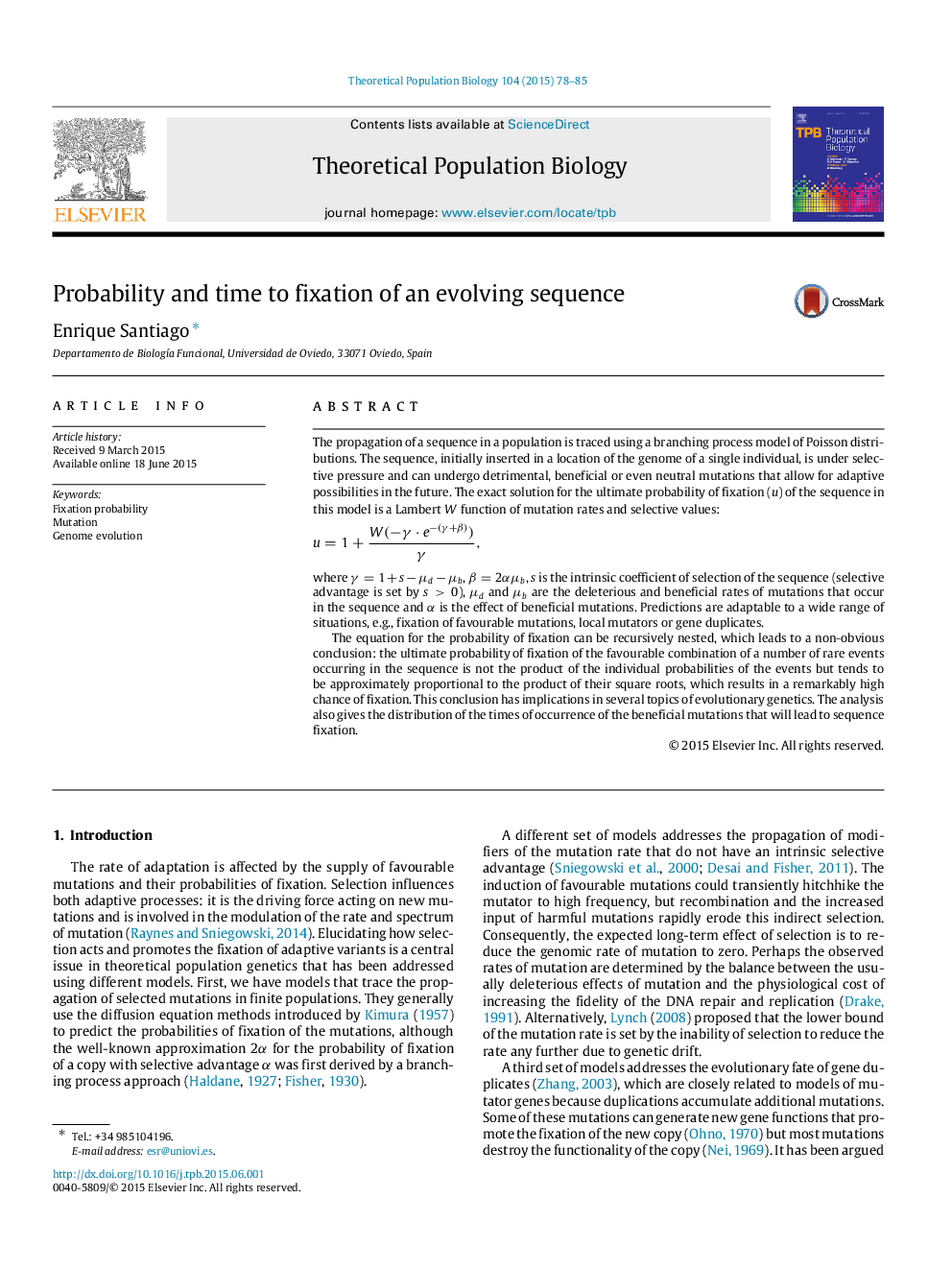| کد مقاله | کد نشریه | سال انتشار | مقاله انگلیسی | نسخه تمام متن |
|---|---|---|---|---|
| 4502321 | 1624148 | 2015 | 8 صفحه PDF | دانلود رایگان |
The propagation of a sequence in a population is traced using a branching process model of Poisson distributions. The sequence, initially inserted in a location of the genome of a single individual, is under selective pressure and can undergo detrimental, beneficial or even neutral mutations that allow for adaptive possibilities in the future. The exact solution for the ultimate probability of fixation (uu) of the sequence in this model is a Lambert WW function of mutation rates and selective values:u=1+W(−γ⋅e−(γ+β))γ, where γ=1+s−μd−μbγ=1+s−μd−μb, β=2αμbβ=2αμb, ss is the intrinsic coefficient of selection of the sequence (selective advantage is set by s>0s>0), μdμd and μbμb are the deleterious and beneficial rates of mutations that occur in the sequence and αα is the effect of beneficial mutations. Predictions are adaptable to a wide range of situations, e.g., fixation of favourable mutations, local mutators or gene duplicates.The equation for the probability of fixation can be recursively nested, which leads to a non-obvious conclusion: the ultimate probability of fixation of the favourable combination of a number of rare events occurring in the sequence is not the product of the individual probabilities of the events but tends to be approximately proportional to the product of their square roots, which results in a remarkably high chance of fixation. This conclusion has implications in several topics of evolutionary genetics. The analysis also gives the distribution of the times of occurrence of the beneficial mutations that will lead to sequence fixation.
Journal: Theoretical Population Biology - Volume 104, September 2015, Pages 78–85
